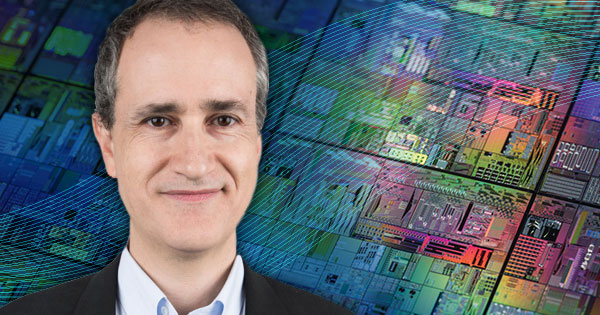


April 4: Making sense of data on networks
Photo by courtesy Antonio Ortega | Photo illustration by Joy Smoker March 21, 2018
USC professor will lecture on graph signal processing
Antonio Ortega, a professor of electrical engineering at the University of Southern California, will lecture on graph signal processing at the University of Delaware’s Mitchell Hall Auditorium on April 4 at 3:30 p.m.
This is the third event in the Distinguished Lecture series hosted by UD’s Department of Electrical and Computer Engineering.
From smartphones to digital assistants and beyond, we live in an increasingly connected world. The technology we rely on for sensing, computing and communicating relies on very large-scale networks, including the Internet, social networks, and transportation and electrical networks.
Researchers are increasingly using data to optimize these networks. The emerging field of graph signal processing seeks to develop new methods to analyze graph signals, which are data associated to nodes in a network, using tools similar to those applied for processing of conventional signals, such as audio, speech or images.
Ortega, an international leader in graph signal processing, will review notions of frequency that can be applied to graph signals and describe how these are used to develop filtering and sampling strategies. He will discuss recent advances in the development of GSP tools and illustrate them with applications in sensing, imaging and machine learning.
For example, in many sensor network applications, sensing devices placed in the environment are battery powered, and replacing batteries is a costly process, said Ortega.
“For this reason, sensor networks should optimize their sensing and communication algorithms in order to provide accurate information about the environment while minimizing their power consumption,” he said.
In his lecture, he will explain how.
Students with an interest in the tech sector can benefit from learning about signal processing, as it is an important part of many systems we use on a daily basis.
"As an example, a cellphone includes signal processing algorithms to improve speech quality, compress and transmit images or video, and to improve the quality of the communications channel,” said Ortega. “Recently, our ability to capture and store data has increased exponentially, often faster than our ability to extract useful information from it. Many of these datasets (from sensor, communication or social networks) can be viewed as being associated to a network or graph. Graph signal processing provides the tools to extend to networks algorithms and concepts that have been successfully applied to speech, images or video.”
About Antonio Ortega
Antonio Ortega received the telecommunications engineering degree from the Universidad Politecnica de Madrid in 1989 and a doctorate in electrical engineering from Columbia University in 1994. In 1994, he joined the EE department at the University of Southern California, where he is currently a professor and has served as associate chair. Antonio is a Fellow of the IEEE (2007), and a member of ACM and APSIPA. He is currently a member of the board of governors of the IEEE Signal Processing Society. He is the inaugural Editor-in-Chief of the APSIPA Transactions on Signal and Information Processing, launched by APSIPA and Cambridge University Press in 2012. Antonio has received several paper awards, including the 2016 Signal Processing Magazine award and was a plenary speaker at ICIP 2013. He has supervised 40 doctoral students, and his work has led to over 300 publications in international conferences and journals, as well as several patents.
Contact Us
Have a UDaily story idea?
Contact us at ocm@udel.edu
Members of the press
Contact us at 302-831-NEWS or visit the Media Relations website

